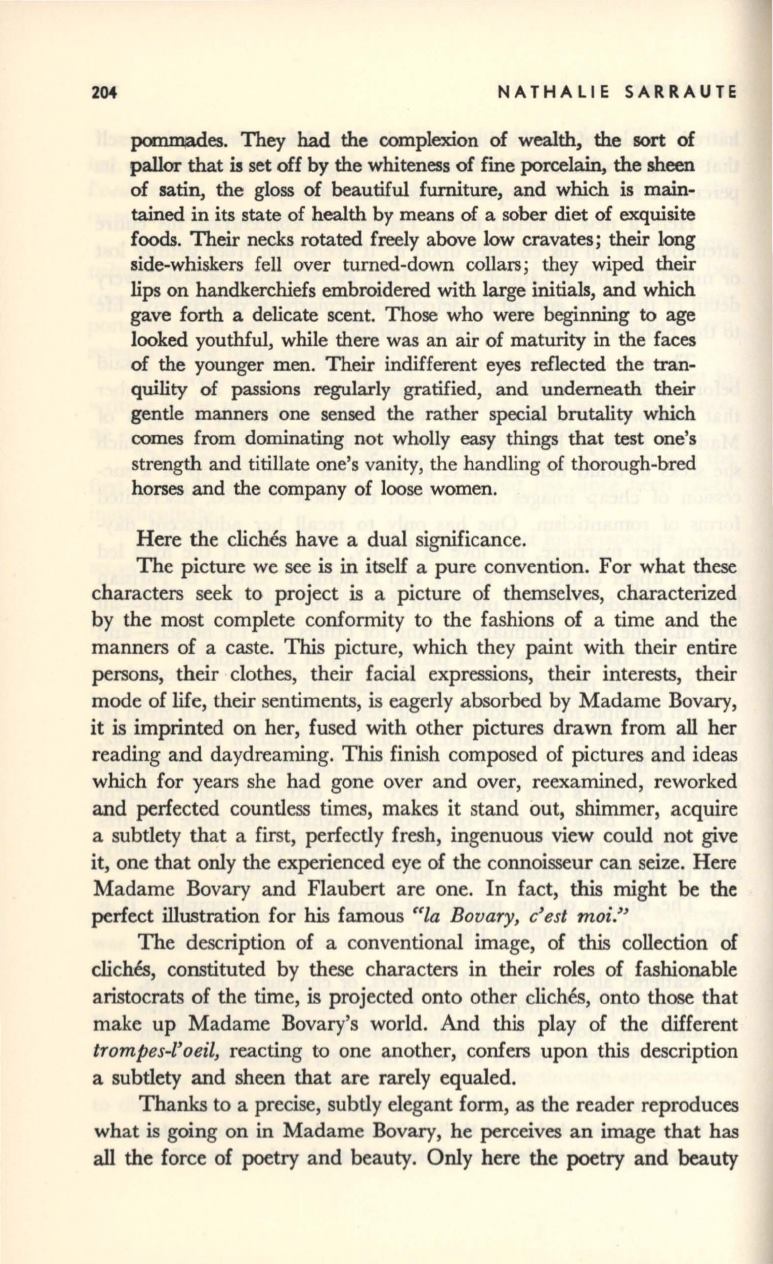
204
NATHALIE SARRAUTE
pnm
rna
des. They had the complexion of wealth, the
sort
of
pallor that
i!
set off by the whiteness of fine porcelain, the sheen
of satin, the gloss of beautiful furniture, and which is main–
tained in its state of health by means of a sober diet of exquisite
foods. Their necks rotated freely above low cravates; their long
side-whiskers fell over turned-down collars; they wiped their
lips on handkerchiefs embroidered with large initials, and which
gave forth a delicate scent. Those who were beginning
to
age
looked youthful, while there was an
air
of maturity in the faces
of the younger men. Their indifferent eyes reflected the tran–
quility of passions regularly gratified, and underneath their
gentle manners one sensed the rather special brutality which
comes from dominating not wholly easy things that test one's
strength and titillate one's vanity, the handling of thorough-bred
horses and the company of loose women.
Here the cliches have a dual significance.
The picture we see
is
in
itself a pure convention. For what these
characters seek to project
is
a picture of themselves, characterized
by the most complete conformity to the fashions of a time and the
manners of a caste. This picture, which they paint with their entire
persons, their clothes, their facial expressions, their interests, their
mode of life, their sentiments, is eagerly absorbed by Madame Bovary,
it
is
imprinted on her, fused with other pictures drawn from
all
her
reading and daydreaming. This finish composed of pictures and ideas
which for years she had gone over and over, reexamined, reworked
and perfected countless times, makes it stand out, shimmer, acquire
a subtlety that a first, perfectly fresh, ingenuous view could not give
it, one that only the experienced eye of the connoisseur can seize. Here
Madame Bovary and Flaubert are one. In fact, this might be the
perfect illustration for his famous
ula Bouary, c'est moi."
The description of a conventional image, of this collection of
cliches, constituted by these characters in their roles of fashionable
aristocrats of the time,
is
projected onto other cliches, onto those that
make up Madame Bovary's world. And this play of the different
trompes-l'oeil,
reacting to one another, confers upon this description
a subtlety and sheen that are rarely equaled.
Thanks
to a precise, subtly elegant form, as the reader reproduces
what
is
going on in Madame Bovary, he perceives an image that has
all
the force of poetry and beauty. Only here the poetry and beauty


